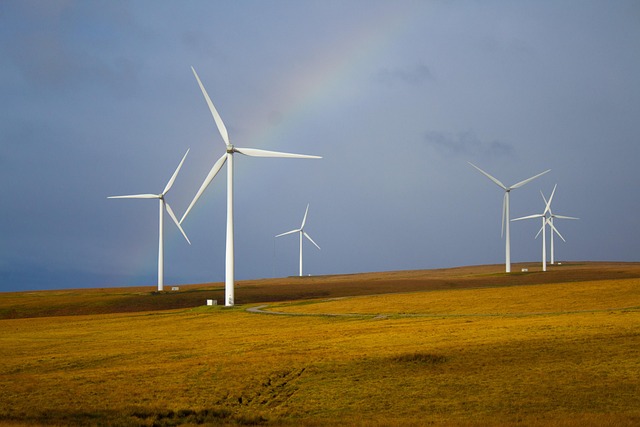Frequently Asked Questions (FAQ)
General Questions
What is wind power?
Wind power is the process of creating electricity by using wind turbines to convert kinetic energy from the wind into electrical energy. This renewable energy source harnesses natural wind flow to generate clean power without emitting greenhouse gases or pollutants.
How does a wind turbine work?
A wind turbine consists of blades that rotate when wind blows. This motion turns a rotor connected to a generator, producing electricity. The process involves several components:
- Blades: Capture the wind’s energy and rotate.
- Rotor: The part connected to the blades that turns to generate electricity.
- Generator: Converts mechanical energy from the rotor into electrical energy.
- Tower: Supports the rotor and generator, allowing the turbine to reach higher wind speeds.
What are the benefits of wind power?
Wind power offers numerous benefits, including:
- Renewable Energy Source: Wind is abundant and inexhaustible in most regions.
- Environmentally Friendly: Wind power does not produce harmful emissions.
- Cost-Effective: The cost of wind energy has significantly decreased, making it one of the most economically viable energy sources.
- Job Creation: The wind industry provides jobs in manufacturing, installation, and maintenance.
Environmental Impact
Does wind energy harm birds and other wildlife?
While wind turbines can pose risks to birds and bats, the overall impact is minimal compared to other energy sources. Many studies show that habitat loss, climate change, and pollution pose larger threats to wildlife. Ongoing research and technology advancements help mitigate these impacts, including:
- Strategic placement of wind farms in areas with fewer migrating birds.
- Innovative turbine designs that minimize collision risks.
- Ongoing monitoring and mitigation plans.
What is the carbon footprint of wind power?
Wind power has an extremely low carbon footprint. During operation, wind turbines do not emit CO2 or other pollutants. The carbon emissions associated with wind energy primarily come from manufacturing, transporting, and installing the turbines. However, these emissions are significantly lower than fossil fuel-based energy sources, making wind power a cleaner alternative.
Installation and Integration
How are wind turbines installed?
The installation of wind turbines involves several steps:
- Site assessment to evaluate wind resources and environmental impacts.
- Obtaining necessary permits and approvals.
- Preparing the site, including access roads and foundations.
- Transporting the turbine components to the site.
- Assembling and erecting the turbine using cranes.
- Connecting the turbine to the electrical grid.
Can wind power be integrated into the existing electricity grid?
Yes, wind power can be integrated into the existing electricity grid. This integration involves modifying transmission systems and using smart grid technologies to manage and distribute the generated electricity effectively. The grid must be capable of handling variable energy inputs, and energy storage solutions can help stabilize supply and demand.
Can I install a wind turbine on my property?
Yes, individuals can install small wind turbines on their property, provided they meet local zoning regulations and permitting requirements. It is essential to assess your location’s wind resource quality and consult with local authorities to ensure compliance with regulations.
Economic Aspects
What is the cost of wind energy?
The cost of wind energy has drastically decreased over the past decade, making it one of the cheapest sources of electricity. Factors influencing the cost of wind energy include:
- Initial investment in turbine technology and installation.
- Location and available wind resources.
- Long-term maintenance and operational costs.
While initial costs may be high, wind energy offers low operating expenses over its lifespan, often resulting in lower electricity prices for consumers.
Are there any financial incentives for wind energy?
Yes, various financial incentives may be available for wind energy projects, including:
- Tax credits and deductions for renewable energy investments.
- Grants or subsidies from federal, state, or local governments.
- Power purchase agreements (PPAs) that can lock in favorable pricing for energy generated from wind projects.
Maintenance and Operations
How often do wind turbines need maintenance?
Wind turbines require regular maintenance to operate efficiently. Typically, scheduled maintenance occurs annually, which includes inspections, lubrication, and parts replacement as necessary. Additionally, monitoring systems help identify any operational issues that may require immediate attention.
What happens when a turbine reaches the end of its life?
Wind turbines generally have a lifespan of around 20 to 25 years. Once they reach the end of their life, they can be decommissioned. The decommissioning process involves:
- Removing the turbine components.
- Recycling or appropriately disposing of materials.
- Restoring the site to its original condition, if required.
How do you ensure the safety of wind turbines?
Safety is a top priority in wind energy operations. Measures to ensure safety include:
- Complying with all industry safety standards and regulations.
- Regular inspections and maintenance to identify potential hazards.
- Training personnel on safety protocols and emergency response procedures.
Future of Wind Power
What is the future of wind energy?
The future of wind energy is promising, driven by advancements in technology and increasing global demand for renewable energy sources. Areas of focus include:
- Enhanced turbine designs that increase efficiency and energy output.
- Offshore wind farms that can harness stronger winds and provide large-scale energy production.
- Integration with energy storage solutions to ensure reliability and stability.
How does wind power support energy independence?
Wind power contributes to energy independence by reducing reliance on imported fossil fuels. By investing in domestic wind energy projects, countries can generate their own electricity, promoting energy security, job creation, and economic growth.
Conclusion
If you have further questions about wind energy or our services at Traviso, please consult our other resources or contact us directly. We are dedicated to providing reliable and eco-friendly wind power solutions, and we appreciate your interest in renewable energy.
